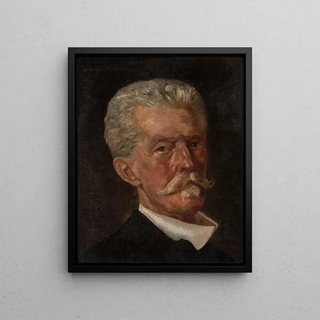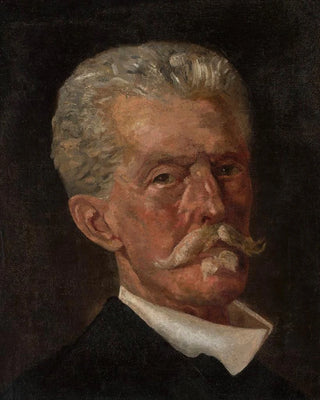Art print | Head of a man - Jacek Malczewski


View from behind

Frame (optional)
In the fascinating universe of art, some works transcend the simple frame of painting to become witnesses of an era, reflections of a soul. The art print Tête d'homme - Jacek Malczewski fits into this tradition, inviting us to explore not only the artist's technique but also the emotions and thoughts that guided him. This piece, imbued with psychological depth, immerses us in a silent dialogue between the viewer and the subject, a man whose gaze seems to carry the weight of existence. Through the finesse of its treatment, Malczewski encourages us to question our own humanity and our place in the world.
Style and uniqueness of the work
Jacek Malczewski's style is characterized by a harmonious fusion of symbolism and realism, a feature that is vividly expressed in Tête d'homme. The artist uses rich colors and delicate nuances to bring his subject to life, creating an atmosphere that is both intimate and universal. The facial features, carefully detailed, reveal a psychological depth that captures attention. Every shadow, every light, is carefully placed to emphasize expression and emotion, making the viewer a participant in this introspection. The composition, though simple, is loaded with meanings, where each element seems to tell its own story, inviting prolonged contemplation. It is within this singularity that the work finds its essence, an invitation to delve into the heart of human thoughts and feelings.
The artist and his influence
Jacek Malczewski, an emblematic figure of Polish art in the early 20th century, is often regarded as a pioneer of a movement that combines tradition and modernity. His work is marked by a deep reflection on national identity and the struggles of his people, themes that resonate strongly in Tête d'homme. Malczewski was not just a painter, but a narrator of the human soul, capable of capturing the nuances of the human condition through his portraits. His influence extends well beyond the borders of Poland, inspiring many artists to explore similar subjects with increased sensitivity.

Matte finish

View from behind

Frame (optional)
In the fascinating universe of art, some works transcend the simple frame of painting to become witnesses of an era, reflections of a soul. The art print Tête d'homme - Jacek Malczewski fits into this tradition, inviting us to explore not only the artist's technique but also the emotions and thoughts that guided him. This piece, imbued with psychological depth, immerses us in a silent dialogue between the viewer and the subject, a man whose gaze seems to carry the weight of existence. Through the finesse of its treatment, Malczewski encourages us to question our own humanity and our place in the world.
Style and uniqueness of the work
Jacek Malczewski's style is characterized by a harmonious fusion of symbolism and realism, a feature that is vividly expressed in Tête d'homme. The artist uses rich colors and delicate nuances to bring his subject to life, creating an atmosphere that is both intimate and universal. The facial features, carefully detailed, reveal a psychological depth that captures attention. Every shadow, every light, is carefully placed to emphasize expression and emotion, making the viewer a participant in this introspection. The composition, though simple, is loaded with meanings, where each element seems to tell its own story, inviting prolonged contemplation. It is within this singularity that the work finds its essence, an invitation to delve into the heart of human thoughts and feelings.
The artist and his influence
Jacek Malczewski, an emblematic figure of Polish art in the early 20th century, is often regarded as a pioneer of a movement that combines tradition and modernity. His work is marked by a deep reflection on national identity and the struggles of his people, themes that resonate strongly in Tête d'homme. Malczewski was not just a painter, but a narrator of the human soul, capable of capturing the nuances of the human condition through his portraits. His influence extends well beyond the borders of Poland, inspiring many artists to explore similar subjects with increased sensitivity.






